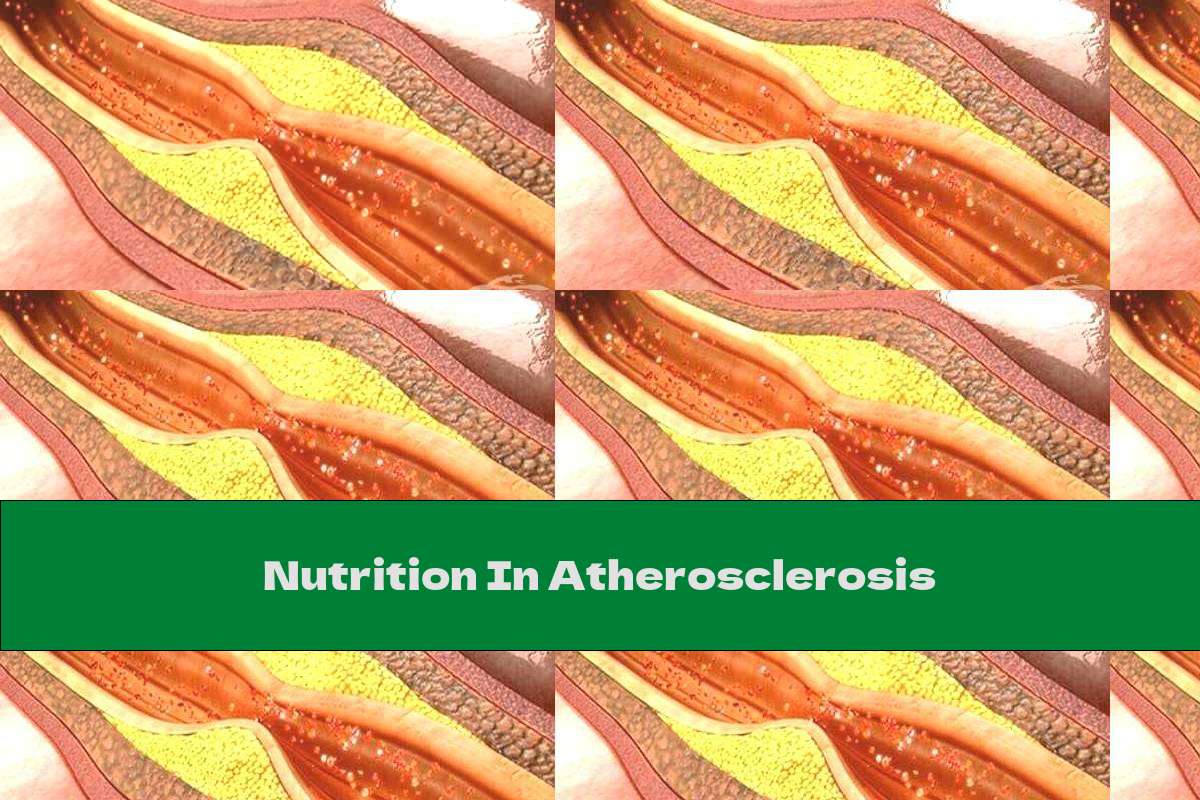Nutrition In Atherosclerosis
 Author: Dean Rouseberg
Time for reading: ~2
minutes
Last Updated:
August 08, 2022
Author: Dean Rouseberg
Time for reading: ~2
minutes
Last Updated:
August 08, 2022

CHAPTERS (Table Of Contents)
Nutrition in atherosclerosis: permitted and prohibited foods, symptoms and causes of the disease.
Atherosclerosis is a disease that develops as a result of impaired lipid metabolism and affects the arteries and veins. It is accompanied by the accumulation of cholesterol on the inner walls of blood vessels.
All accumulations are in the form of slag and over time begin to grow at the expense of connective tissue.
If timely treatment is not taken, the walls of the blood vessels begin to deform and subsequently narrow, completely blocking blood flow.
The reasons
There are a number of factors that can be a prerequisite for the development of atherosclerosis. They are both hereditary and the result of a person's lifestyle. Past illnesses also have an impact.
In view of all this, the following main causes of atherosclerosis are identified:- bad habits (alcoholism, smoking);
- sedentary and inactive lifestyle;
- disorders of the body's protective functions and the metabolism of lipids and proteins;
- viruses (herpes, cytomegalovirus and others);
- accumulation of toxins and heavy metals in the body;
- hereditary defects in the walls of blood vessels;
- damage to blood vessels by chlamydial fungi;
- changes in hormonal synthesis due to age;
- high levels of cholesterol and lipids in the blood;
- obesity and diabetes mellitus;
- malnutrition, which contains a large amount of fat and carbohydrates and little protein and cellulose;
- nervous tension (stress, depression);
- chronically elevated blood pressure;
- the period for menopause at marriage.
The symptoms
The clinical manifestations of the disease very often do not correspond to the real picture of the damage to the blood vessels.
Depending on the location, different symptoms are observed:- tingling in the limbs and facial muscles;
- dizziness;
- slurred speech;
- sudden blindness;
- angina pectoris;
- heart attack;
- burning and pressing pain in the chest;
- impaired memory and concentration;
- cold limbs;
- discoloration of the skin of the limbs (to a purple-bluish tinge);
- trophic ulcers, gangrene;
- abdominal frog.
Useful products for atherosclerosis:
- rye, wholemeal or bran bread;
- vegetable broths and soups, milk porridges from cereals (buckwheat, wheat, barley, oatmeal);
- boiled or roasted white poultry or lean beef;
- seafood - lean fish, shellfish, sea cucumber;
- quail eggs and egg white omelette;
- raw and stewed vegetables, salads of them (cabbage, carrots, beets, pumpkin, zucchini, cauliflower, broccoli, eggplant and others);
- low-fat milk and sour milk products (kefir, cream, cheese);
- unsweetened and medium-sweet fruits and berries (raspberries, blackcurrants, apples, pears, plums, etc.);
- compotes and oshav;
- liquids (freshly squeezed juices, weak tea and coffee);
- vegetable fats for seasoning salads (olive oil, linseed oil).
Dangerous and harmful foods in atherosclerosis
During medical treatment of the problem, the following should be excluded from the menu:
- alcohol intake and smoking;
- sugar;
- red meats (pork, beef, lamb);
- by-products (kidneys, heart, brain, liver);
- smoked products and sausages;
- fatty fish, caviar;
- high-fat dairy products;
- cereals with a high glycemic index (rice, semolina, pasta);
- sweet foods, including dried and fresh fruits (honey, sugar, ice cream, pasta with cream, grapes, dried apricots, raisins, peaches, etc.).
- fried dishes;
- carbonated drinks;
- bread and bakery products made with yeast from high quality flours;
- ready-made sauces.
- How to "feed" blood vessels
- How to clean blood vessels with garlic
- Nutrition in occlusion (obstruction, obstruction, closure of blood vessels)
Related Articles
- The Nutritional Benefits of Boiled Cod: A Healthy and Delicious Choice
- Amino Acids in Nutrition: Importance, Types, Sources, and Diet Plans
- The Ultimate Guide to E160b in Nutrition: Benefits, Sources, and Recipes
- The Ultimate Guide to Preconditioning in Nutrition: Benefits, Tips, and Recipes
- The Truth About Sucralose in Nutrition: Benefits, Concerns, and Usage